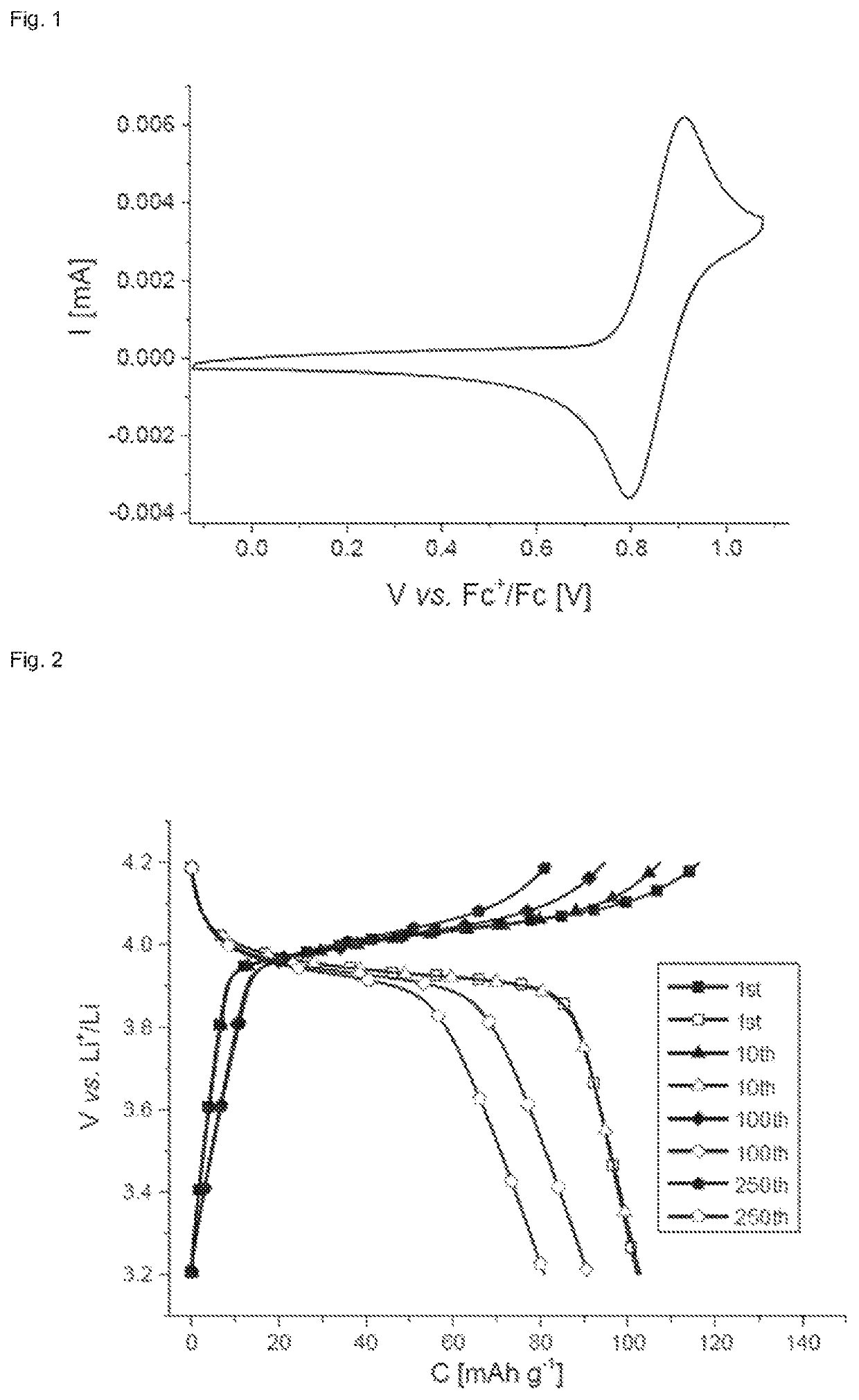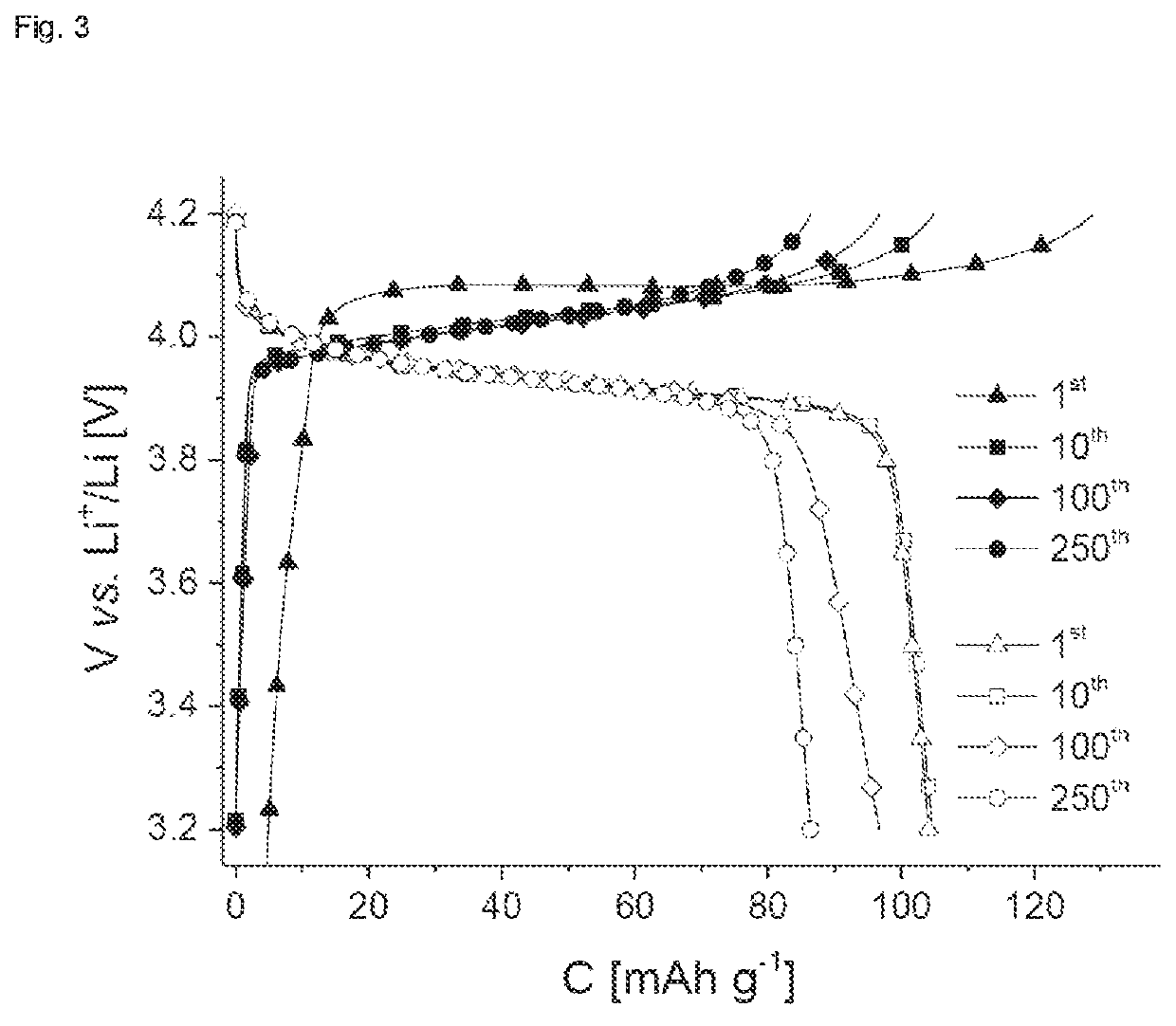Use of thianthrene-containing polymers as a charge store
a technology of thianthrene and polymer, which is applied in the manufacture of electrodes, cell components, coatings, etc., can solve the problems of low cycling stability and low capacity of the thianthrene-containing polymer described by speer et a
- Summary
- Abstract
- Description
- Claims
- Application Information
AI Technical Summary
Benefits of technology
Problems solved by technology
Method used
Image
Examples
examples
1. General Remarks
[0443]1.1 Abbreviations
[0444]AIBN—azobis(isobutyronitrile); DMAc—dimethy acetamide; DMAP—dimethylaminopyridine; DMF—dimethylformamide; DVB—divinylbenzene; JohnPhos—(2-biphenyl)di-tert-butylphosphine; NEt3—triethylamine; Pd(dba)2—bis(dibenzylideneacetone)palladium(0); NMP—N-methyl-2-pyrrolidone; PS—polystyrene; SEC—size exclusion chromatography; TBAClO4—tetrabutylammonium perchlorate; TBAF—tetrabutylammonium fluoride; TBAPF6—tetrabutylammonium hexailuorophosphate; THF—tetrahydrofuran; Tol.—toluene; TVCT—2,4,6,8-tetramethyl-2,4,6,8-tetravinylcyclotetrasiloxane.
[0445]The numbers in brackets given in the reaction schemes which follow relate to the respective section in which the synthesis has been described.
[0446]1.2 Test Methods
[0447]1H and 13C NMR spectra were recorded with a Bruker AC 300 (300 MHz) spectrometer at 298 K. For cyclic voltammetry and galvanostatic experiments, a Biologic VMP 3 potentiostat was available. Size exclusion chromatography was conducted on a...
PUM
| Property | Measurement | Unit |
|---|---|---|
| concentration | aaaaa | aaaaa |
| concentration | aaaaa | aaaaa |
| temperature | aaaaa | aaaaa |
Abstract
Description
Claims
Application Information
 Login to View More
Login to View More - R&D
- Intellectual Property
- Life Sciences
- Materials
- Tech Scout
- Unparalleled Data Quality
- Higher Quality Content
- 60% Fewer Hallucinations
Browse by: Latest US Patents, China's latest patents, Technical Efficacy Thesaurus, Application Domain, Technology Topic, Popular Technical Reports.
© 2025 PatSnap. All rights reserved.Legal|Privacy policy|Modern Slavery Act Transparency Statement|Sitemap|About US| Contact US: help@patsnap.com



